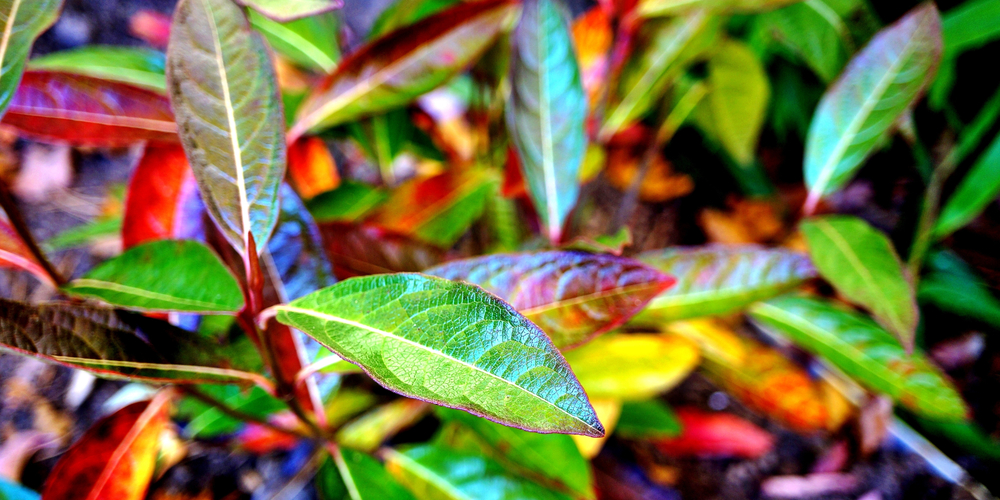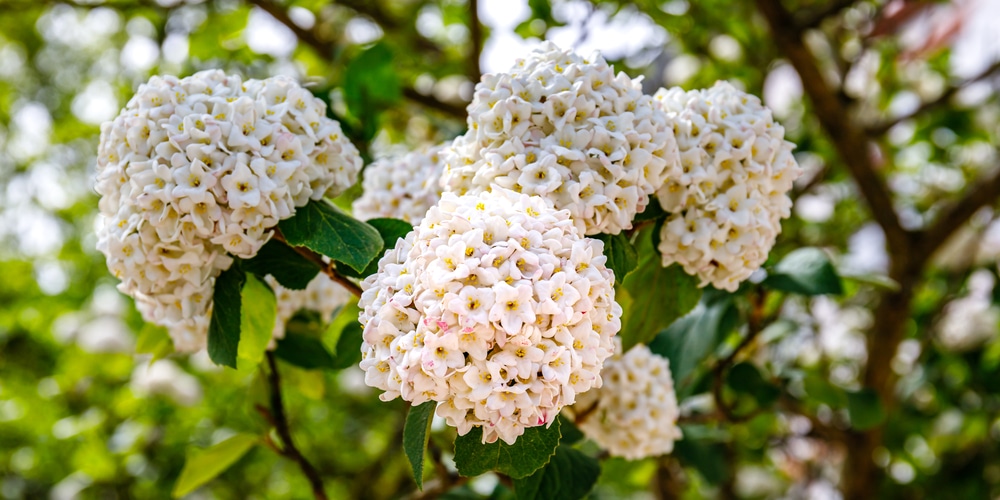The Viburnum Hedge plant can be a lovely, environmental addition to any and all homes that have a suitable environment. Although this indoor plant is largely common, it does have a few more particular requirements that you may not have been aware of. So, here is everything you need to know about the Viburnum Hedge plant and how to care for it.

| Botanical Name | Viburnum tinus |
| Common Name | Viburnum Hedge and Laurustinus ‘Eve Price’ |
| Plant Type | Perennial |
| Flower Color | A bright white |
| Size When Mature | Approximately 98 to 158 inches in height
Approximately 98 to 158 inches in width |
| Bloom Time | Early winter to early spring |
| Sun Requirements | Prefers full exposure to sunlight but can handle partial or full shade |
| USDA Hardiness Zones | 2 to 9 |
| Soil PH Range | 5.5 to 8.0 |
| Soil Type | Moist but well drained |
| Water Needs | Medium |
| Native Area | the Mediterranean |
What you Need to Know About the Viburnum Hedge
The Viburnum Hedge is a gorgeous flowering shrub that is known to be most radiant during winter. This plant has bright white flowers that stand out against its deep green foliage and it is native to the Mediterranean.
How to Care for the Viburnum Hedge
Here’s everything you need to know about growing and caring for a thriving Viburnum Hedge
Light
The Viburnum Hedge will do best if it is provided full exposure to the sunlight. That being said, this plant is also somewhat capable of tolerating partial, and in certain cases, full shade.
This means that the Viburnum Hedge will continue to grow and live if it is placed in a spot that gives it partial or possibly even full shade instead of full sun but it won’t be able to flourish and flower to the best of its abilities.
Water and Soil Needs
It is recommended that you water your Viburnum Hedge regularly for the first couple years after you’ve initially planted it. You should especially ensure that you are giving your young Viburnum Hedge enough water during dry seasons.
The Viburnum Hedge is not really that particular about what type of soil it grows in. This means that it can grow well in clay, loamy, or possibly even acidic soil. Moreover, it can handle soil that has a pH ranging from 5.5 to 8.0.
However, you must ensure that the soil that you provide this plant with is well draining as it cannot grow and flourish if its roots are constantly sitting in water. Furthermore, the plant could possibly be damaged by root rot if it is placed in water logged soil.
Furthermore, the Viburnum Hedge tends to do best when it is provided with soil that is nice and moist.
Temperature Requirements

Fertilizer
The best fertilizer to use on a Viburnum Hedge is an organic fertilizer. Alfa meal, compost, fish emulsion and rotted manures are all perfectly suitable to use on your Viburnum Hedge plant. It is best that you fertilize this particular piece of greenery regularly during its growing season.
Common Diseases
Things such as anthracnose and fungal spots can become a potential problem and cause some harm to your Viburnum Hedge, just like with most other perennial plants and trees. That being said, none of these are particularly common or likely to occur in your Viburnum Hedge if it is looked after properly.
final thoughts:
Overall, the Viburnum Hedge is a really beautiful and pretty easy to take care of shrub. This plant is likely to maintain its radiance and beauty for as long as a hundred or possibly even a hundred and fifty years if all of the above requirements and recommendations are executed or at least taken into consideration.
